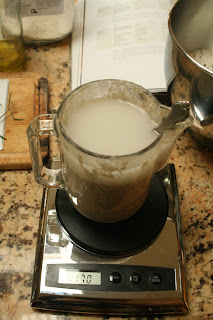I like the description about protein in flour from here: http://www.finecooking.com/articles/choosing-flour-for-baking.aspx
... flour is made up of carbohydrates (or starch), proteins, and in the case of whole-wheat flour, a bit of fat. Of these three nutrients, protein matters most to the baker. The proteins in wheat are called gluten-forming proteins, and the quantity and quality of these proteins determines how a flour will perform in the kitchen.
A high percentage of protein means a harder (stronger) flour best suited to chewy, crusty breads and other yeast-risen products. Less protein means a softer flour, best for tender and chemically leavened baked goods, like pie crusts, cakes, cookies, and biscuits.
Additional information: http://en.wikipedia.org/wiki/Flour
In general, as the extraction rate of the flour increases, so do both the protein and the ash content. However, as the extraction rate approaches 100% (whole meal), the protein content drops slightly, while the ash content continues to rise.
The following table shows some typical examples of how protein and ash content relate to each other in wheat flour:
The following table shows some typical examples of how protein and ash content relate to each other in wheat flour:
| Ash | Protein | Wheat flour type |
| US | German | French |
| ~0.4% | ~9% | pastry flour | 405 | 40 |
| ~0.55% | ~11% | all-purpose flour | 550 | 55 |
| ~0.8% | ~14% | high gluten flour | 812 | 80 |
| ~1% | ~15% | first clear flour | 1050 | 110 |
| >1.5% | ~13% | white whole wheat | 1600 | 150 |
http://en.wikipedia.org/wiki/Gluten
Gluten (from Latin
gluten "
glue") is a protein composite that appears in foods processed from
wheat and related species, including
barley and
rye. It gives
elasticity to
dough, helping it to
rise and to keep its shape, and often giving the final product a
chewy texture.
http://www.progressivebaker.com/resources/tips_protein_quality.shtm
Experts recommend using a low-protein flour, like Progressive Baker® Bread Flour, for the best performance in artisan breads. But the level of protein provides only a partial measure of how the flour will perform during baking. The quality of the protein counts too. Best results come when you use a low-protein flour containing high quality protein.
Protein quality refers to the protein's ability to lend a good balance of characteristics such as extensibility, elasticity and fermentation tolerance to the dough. Low-protein flour forms less gluten, creating a dough with less strength. That's good, because it allows you to achieve the desirable crisp crust, fermentation flavor and irregular hole structure that distinguishes artisan breads. However, if the dough is too weak, it won't hold its shape during the final proof.
Wheat itself has no gluten; it contains two types of protein that, when blended with water, form the gluten. A high-quality protein can absorb more water, helping to develop a good dough with less gluten. High-quality protein also gives the dough better fermentation endurance, so it won't collapse if delays prevent you from getting it into the oven exactly on schedule.
No specific test exists for measuring protein quality. It can only by assessed through actual baking tests, where the protein performance of different varieties of flour is compared and evaluated. At our Bake Lab, scientists perform extensive baking tests with every new wheat crop. We conduct some of the most stringent tests in the industry to evaluate the performance of Progressive Baker® flour in many different applications. Our goal is to provide bakers with flours that deliver consistent baking performance, batch after batch.
























































